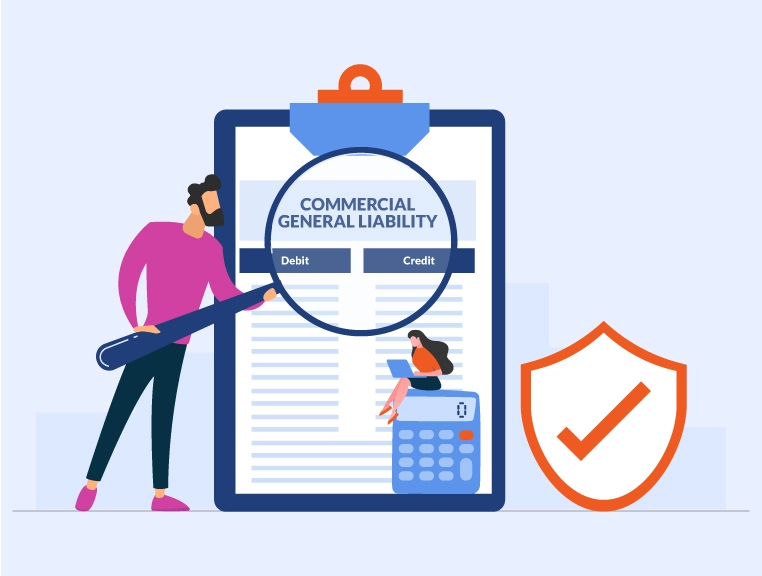In the ever-evolving world of search engine optimization (SEO), technical performance plays a crucial role in determining your website’s visibility and ranking. Monitoring and analyzing Key Performance Indicators (KPIs) is essential for understanding and improving your site’s technical SEO. In 2024, staying on top of the right KPIs can significantly impact your SEO strategy and overall digital performance. This guide explores nine essential technical SEO KPIs you need to monitor closely.
1. Site Speed
Definition and Importance
Site speed refers to the time it takes for a web page to load fully. It’s a critical factor for both user experience and search engine ranking. Search engines like Google consider site speed as a ranking factor because faster sites provide a better user experience.
How to Measure It
Use tools like Google PageSpeed Insights, GTmetrix, and Pingdom to measure your site’s loading speed. These tools provide insights into how quickly your pages load and offer recommendations for improvement.
Why You Need to Monitor It
A slow-loading website can lead to higher bounce rates, lower user engagement, and reduced conversions. Monitoring site speed helps you identify performance issues and optimize loading times, ensuring a smoother experience for your visitors.
2. Mobile Friendliness
Definition and Importance
Mobile friendliness refers to how well your website performs on mobile devices. With the increasing use of smartphones and tablets, ensuring your site is mobile-friendly is essential for SEO and user experience.
How to Measure It
Use Google’s Mobile-Friendly Test and Google Search Console’s Mobile Usability report to evaluate how well your site performs on mobile devices. These tools highlight any issues that may affect mobile usability.
Why You Need to Monitor It
A significant portion of web traffic comes from mobile devices. If your site isn’t optimized for mobile, you risk losing potential visitors and affecting your search rankings. Monitoring mobile friendliness helps you ensure that your site provides a seamless experience across all devices.
3. Crawl Errors
Definition and Importance
Crawl errors occur when search engine bots encounter issues while crawling your site. These errors can prevent search engines from indexing your pages, which can impact your site’s visibility and ranking.
How to Measure It
Google Search Console provides detailed reports on crawl errors, including 404 errors (page not found), server errors, and redirect errors. Regularly check these reports to identify and address crawl issues.
Why You Need to Monitor It
Crawl errors can hinder search engines from indexing your content, affecting your site’s SEO performance. Monitoring crawl errors allows you to fix broken links, resolve server issues, and ensure that search engines can effectively crawl and index your site.
4. Indexation Rate
Definition and Importance
Indexation rate refers to the percentage of your site’s pages that are indexed by search engines. Proper indexation is crucial for ensuring that your content is available to users through search results.
How to Measure It
Use Google Search Console to check the index status of your pages. The Coverage report provides insights into which pages are indexed and highlights any issues that may affect indexation.
Why You Need to Monitor It
If a significant portion of your pages isn’t indexed, they won’t appear in search results. Monitoring indexation rate helps you identify and address issues that may prevent search engines from indexing your content, improving your site’s visibility.
5. XML Sitemap Status
Definition and Importance
An XML sitemap is a file that lists all the pages on your website, helping search engines crawl and index your content more efficiently. Monitoring the status of your XML sitemap ensures that it’s properly submitted and functioning.
How to Measure It
Google Search Console provides a report on the status of your XML sitemap. Check this report to ensure that your sitemap is submitted correctly and that search engines are using it to crawl your site.
Why You Need to Monitor It
A well-maintained XML sitemap helps search engines discover and index your content more efficiently. Monitoring the status of your sitemap ensures that it’s up-to-date and functioning properly, improving your site’s crawlability.
6. HTTPS Security
Definition and Importance
HTTPS (HyperText Transfer Protocol Secure) ensures that data transmitted between your site and its visitors is encrypted and secure. Google considers HTTPS a ranking factor, making it essential for SEO.
How to Measure It
Check if your site is using HTTPS by looking for the padlock icon in the browser’s address bar. You can also use tools like SSL Labs’ SSL Test to analyze your site’s SSL certificate and security configuration.
Why You Need to Monitor It
Sites that aren’t secured with HTTPS may be flagged as insecure by browsers, which can deter visitors and affect your rankings. Monitoring HTTPS status ensures that your site is secure and meets industry standards for data protection.
7. Broken Links
Definition and Importance
Broken links are hyperlinks that lead to pages that no longer exist or have been moved. They can negatively impact user experience and SEO by causing 404 errors and reducing the effectiveness of internal linking.
How to Measure It
Use tools like Screaming Frog SEO Spider, Ahrefs, or Google Search Console to identify broken links on your site. These tools provide reports on broken links and their locations.
Why You Need to Monitor It
Broken links can harm your site’s user experience and SEO performance. Monitoring and fixing broken links helps maintain a smooth browsing experience for users and ensures that search engines can effectively crawl and index your site.
8. Structured Data Errors
Definition and Importance
Structured data helps search engines understand the content of your site and enhance search results with rich snippets. Errors in structured data can prevent search engines from using this information effectively.
How to Measure It
Use Google Search Console’s Enhancements report to check for structured data errors. The report highlights any issues with your structured data implementation and provides recommendations for fixing them.
Why You Need to Monitor It
Structured data errors can prevent search engines from displaying rich snippets and other enhanced search features. Monitoring and fixing these errors helps improve your site’s visibility and search performance.
9. Core Web Vitals
Definition and Importance
Core Web Vitals are a set of metrics that measure user experience on your site, including loading performance, interactivity, and visual stability. These metrics are crucial for both SEO and user satisfaction.
How to Measure It
Use Google PageSpeed Insights, Google Search Console, and Lighthouse to measure Core Web Vitals. These tools provide detailed reports on metrics such as Largest Contentful Paint (LCP), First Input Delay (FID), and Cumulative Layout Shift (CLS).
Why You Need to Monitor It
Core Web Vitals are a ranking factor for Google and directly impact user experience. Monitoring these metrics helps you identify and address performance issues, ensuring a better experience for your visitors and improved search rankings.
Monitoring and optimizing technical SEO KPIs is essential for maintaining and improving your site’s search engine performance. By focusing on these nine key metrics—site speed, mobile friendliness, crawl errors, indexation rate, XML sitemap status, HTTPS security, broken links, structured data errors, and Core Web Vitals—you can ensure that your site is well-optimized for both search engines and users. Regularly tracking and addressing these KPIs will help you stay ahead in the competitive SEO landscape and achieve better results in 2024.
FAQs
1. What is a KPI in SEO?
A Key Performance Indicator (KPI) in SEO is a measurable value that helps evaluate the effectiveness of SEO strategies and overall site performance. KPIs provide insights into various aspects of SEO, such as site speed, mobile friendliness, and indexation.
2. Why is site speed important for SEO?
Site speed affects user experience and search engine rankings. Faster-loading pages improve user satisfaction and reduce bounce rates, which can positively impact your SEO performance.
3. How can I improve my site’s mobile friendliness?
To improve mobile friendliness, ensure that your site is responsive, optimize images and resources for mobile devices, and use Google’s Mobile-Friendly Test to identify and address any issues affecting mobile usability.
4. What should I do if I encounter crawl errors?
Identify and fix crawl errors by checking Google Search Console for detailed reports. Address issues such as broken links, server errors, and redirect problems to ensure that search engines can effectively crawl and index your site.
5. How can I check if my XML sitemap is functioning correctly?
Use Google Search Console to check the status of your XML sitemap. Ensure that it is submitted correctly and that search engines are using it to crawl and index your site’s pages.
6. Why is HTTPS security important for SEO?
HTTPS security encrypts data transmitted between your site and its visitors, providing a secure browsing experience. Google considers HTTPS a ranking factor, and sites without it may be flagged as insecure.
7. How can I find and fix broken links on my site?
Use tools like Screaming Frog SEO Spider, Ahrefs, or Google Search Console to identify broken links. Fix broken links by updating or removing them and ensuring that all internal and external links are functional.
8. What is structured data, and why is it important?
Structured data is a standardized format for providing information about a webpage to search engines. It helps search engines understand your content and can enhance search results with rich snippets, improving visibility and click-through rates.
9. How can I measure Core Web Vitals?
Measure Core Web Vitals using tools like Google PageSpeed Insights, Google Search Console, and Lighthouse. These tools provide detailed reports on metrics such as LCP, FID, and CLS, helping you assess and improve user experience.
10. How often should I monitor technical SEO KPIs?
Regularly monitor technical SEO KPIs to ensure optimal performance. Consider checking these metrics monthly or quarterly to identify and address any issues promptly and stay updated on your site’s technical health.
Get in Touch
Website – https://www.webinfomatrix.com
Mobile - +91 9212306116
Whatsapp – https://call.whatsapp.com/voice/9rqVJyqSNMhpdFkKPZGYKj
Skype – shalabh.mishra
Telegram – shalabhmishra
Email - info@webinfomatrix.com









 English (US) ·
English (US) ·